Implementing viewports from the grid is one potential solution.
A viewport defines a region in the graphics device. It is sometimes useful to define a viewport, then push it and draw inside it. A different viewport may then be pushed and drawn inside of; this method amounts to a simple way to arrange objects on a page.
First, define page and margin sizes.
# Assume total page size is 8.5in x 11in
vp.page <- viewport(x = 0.5, y = 0.5,
width = unit(x = 8.5, units = "inches"),
height = unit(x = 11, units = "inches"))
# Assume 0.5in margins (i.e., 0.5 left, right, bottom, top)
# This totals 1in for each dimension
vp.marg <- viewport(x = 0.5, y = 0.5,
width = (7.5 / 8.5), height = (10 / 11))
Next, Define viewports for each column.
To arrange columns horizontally within a viewport, their x positions will be equally spaced in the interval (0,1).
In the 2 column case, x1 = 0.25 and x2 = 0.75:
# Define the viewport for column 1
vp.col1 <- viewport(x = 0.25, y = 0.5, width = 0.5, height = 1)
# Define the viewport for column 2
vp.col2 <- viewport(x = 0.75, y = 0.5, width = 0.5, height = 1)
Now, actual data is defined.
This data will also need to be "grob'd" to be drawn into viewports.
# Assume data is stored as `dat` and has 40 rows
# Grob the data for column 1
col1 <- tableGrob(dat[1:20,], rows = NULL)
# Grob the data for column 2
col2 <- tableGrob(dat[21:40,], rows = NULL)
Now, draw the pdf:
# Initiate the pdf
pdf("results.pdf", height = 11, width = 8.5)
# Push the viewports for page and margin
pushViewport(vp.page); pushViewport(vp.marg)
# Push column 1
pushViewport(vp.col1)
# Draw column 1
grid.draw(col1)
# Return to the previous viewport
upViewport()
# Push the viewport for column 2
pushViewport(vp.col2)
# Draw column 2
grid.draw(col2)
# End the pdf and save it
dev.off()
